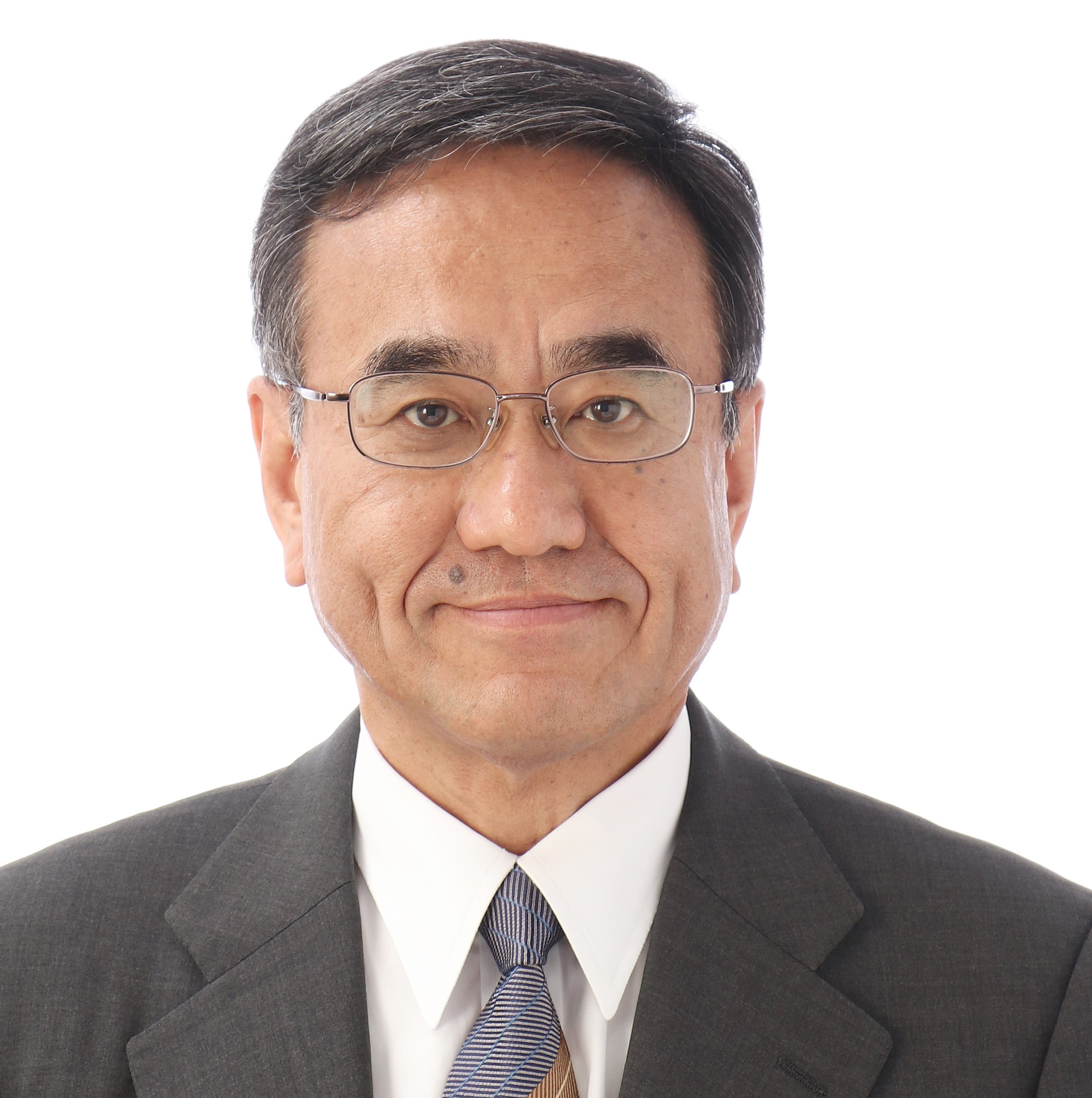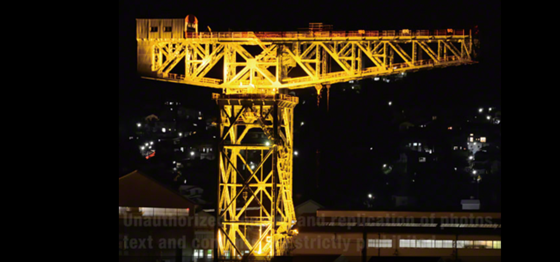PEOPLE
Advisor, Federation of Japan Port and Airport Construction Association
(Ex. Chairman of Specialists Center of Port and Airport Engineering)

Tension rose as the wheels finally began turning.
Hayashida: I was delighted when I heard that you had received approval from the Agency for Cultural Affairs.
Kato: It must have been around five o'clock in the evening. I received a document from Hiroto Izumi, then Joint Director-General of the Regional Revitalization of the Cabinet Secretariat, stating that we had received the government's recommendation, and I went to see you to report it. When I did so, you looked at me with surprise and gave me a serious look, as if to say that it had finally come this far. I will never forget your eyes at that time.
Hayashida: That’s funny. Please forget about it now (laughs). But it is true that the tension rose as the wheels finally began to turn. At the same time, we decided in earnest that we would actively cooperate towards the registration of Sites of Japan’s Meiji Industrial Revolution on the World Heritage List. Nagasaki has the largest number of component assets, and I was also happy that my hometown would be inscribed on the World Heritage List.
Kato: In Nagasaki, preparations for the World Heritage listing of “Churches and Christian Assets” (later renamed “Assets Related to Secret Christians in Nagasaki and the Amakusa Region”) were underway even before the project to nominate the industrial heritage sites as a World Heritage Site was launched. With the decision to nominate the industrial heritage site first, you must have had a difficult time being caught between the two.
Hayashida: It was difficult for those in charge. At first, the people involved with the churches were very reluctant. That's not surprising. But in the end, they made a generous decision. I am glad that both churches were subsequently inscribed on the World Heritage List, which is a wonderful achievement.
Kato: You even helped us raise funds to continue our activities. We travelled to 17 countries around the world to explain industrial heritage at international conferences, and we needed travel expenses for experts to come from all over the world, so fundraising was an important issue for us.
Hayashida: When I looked at the income and expenditure statement, I was surprised at how much money it was costing us. But I thought what was necessary could not be helped because the funds were for essential expenses. Your style of doing everything that needed to be done was really dynamic.
Kato: I was desperate to risk my life to repay the kindness of those who cooperated with us. Nevertheless, I was tormented by the regulatory reforms. I felt like my head was going to short-circuit because of the complicated content, and the time limit was only four months. Just remembering it makes me sick to my stomach, and it was no small feat to overcome the barriers of the strategic framework.
Hayashida: It's incredible what you've been able to achieve. I still talk about that in various places “How Koko Kato's energy and tenacity were terrific, and not just anyone can do it. When you are moving towards a goal, you need to have the same power to break through as Ms Kato”.
Kato: The road to World Heritage listing was indeed like a steeplechase, but I learned a lot myself.
Hayashida: I was also on edge when I was in the middle of the whirlwind, but I generally enjoyed the experience of taking on new challenges. Above all, I am grateful that I was involved in a significant project and that I was able to witness the historical moment when the site was inscribed on a global scale, which was a very moving experience.
Kato: We will continue to focus our efforts on the Sites of Japan’s Meiji Industrial Revolution in the future, and we look forward to your continued support. Thank you very much for your valuable time today.

Composition and Text by Akane Maruyama
Representative Director, National Congress of Industrial Heritage
(Honorary Advisor, Kyushu Railway Company (JR Kyushu)
Senior Researcher, Industrial Heritage Information Centre
Honorary Advisor, Nippon Mining Co., Ltd.
The Ambassador of Supporting Kamaishi Hometown
Former Director of Nagasaki City World Heritage Office
Former General Manager, Nagasaki Shipyard and Machinery Works, Mitsubishi Heavy Industries, Ltd.
Chairman, Fujisankei Group
Executive Managing Advisor, Fuji Television Network, Inc.
Executive Managing Advisor, Fuji Media Holdings, Inc.
Advisor, Federation of Japan Port and Airport Construction Association
(Ex. Chairman of Specialists Center of Port and Airport Engineering)
Mayor of Nagasaki City
Former Director of the Sano Tsunetami Memorial Museum (currently known as Sano Tsunetami and the Mietsu Naval Dock History Museum)
Director of NPO Association for Thinking about Satoyama
Director of National Congress of the Industrial Heritage
Honorary Chief Priest Toshinari Ueda
Former Mayor of Omuta City
Archaeologist and Heritage Conservation Specialist
A fellow of the Japan Federation of Engineering Societies
Team Member of the Industrial Project Team Office for the Promotion of World Heritage Listing under Cabinet Secretariat
Governor of Kagoshima Prefecture
Mayor of Hagi City
Mayor of Uki City, Kumamoto Prefecture
The Former Employee of Nippon Steel Corporation
An Associate Professor of the Faculty of Science and Engineering in Iwate University
Chairman of the Tourist Guide Association of Misumi West Port
President of Kuraya Narusawa Co., Ltd.
Chairman of Izunokuni City Tourism Association
Director and General Manager of Gunkanjima Concierge
Producer of the Gunkanjima Digital Museum
Owner at Tōge Chaya
Chairman: Mr. Hidenori Date
President: Mr. Masahiro Date
Proprietor, Houraikan Inn
Representative Director of Egawa Bunko non-profit incorporated foundation
The 42nd head of the Egawa Family
Democratic Party for the People (DPP) Representative for Nagasaki Prefecture
President of the NPO, Way to World Heritage Gunkanjima
Representative Director
MI Consulting Group
President of Watanabe Production Group and Honorary Chair of Watanabe Productions Co., Ltd.
Member of the House of Councillors
Governor
Kagoshima Prefecture
World Heritage Consultant
Director and Dean, The Kyushu-Asia Institute of Leadership
Representative Director, SUMIDA, Inc.
Journalist, founder of the Shimomura Mitsuko Ikikata Juku School
Representative, Rally Nippon
Chairman, Sites of Japan’s Meiji Industrial Revolution World Heritage Route Promotion Council Director, National Congress of Industrial Heritage
Representative Director, General Incorporated Foundation National Congress of Industrial Heritage (Advisor, Public Interest Incorporated Foundation Capital Markets Research Institute)
Mayor of Nagasaki City
Policy Director at Heritage Montreal
World Heritage Consultant
Executive Director of Kogakuin University
Heritage Architect and International Consultant
Head of Data Acquisition at The Glasgow School of Art’s School of Simulation and Visualisation
Head of Industrial Heritage, Historic Environment Scotland, Edinburgh
Scottish Ten Project Manager, Historic Environment Scotland, Edinburgh
Mayor of Izunokuni City, Shizuoka Prefecture
Pro-Provost and Chairman of Council of the Royal College of Art. Heritage advisor of Canal & River Trust for England and Wales.
Dean of Tokyo Rissho Junior College
Professor emeritus of Keio University
Mayor of Kitakyushu City
At the 39th session of the World Heritage Committee convened in Bonn, Germany, from June 28 to July 8, 2015, the decision was approved to inscribe the Sites of Japan’s Meiji Industrial Revolution on the World Heritage list.
At a celebratory party held to mark the occasion, some of the primary promoters of the project spoke of their joy in achieving their goal and of the trials and tribulations to getting there.
Director and Managing Executive Officer, Hanshin Expressway Company Limited
Member, Board of Directors, National Congress of Industrial Heritage
Vice-Governor of Shizuoka Prefecture
Mayor of Hagi City
Chairman, Tokyo Metro Co., Ltd.
Mayor of Omuta City
Deputy Director-General, Lifelong Learning Policy Bureau, MEXT
Former Counsellor, Cabinet Secretariat
Mayor of Kamaishi City
Member, Board of Directors, National Congress of Industrial Heritage Counselor, Shimadzu Limited
Chairman of the Consortium for the World Heritage Inscription of Modern Industrial Heritage (Kyushu-Yamaguchi) and governor of Kagoshima Prefecture (as of 2015)